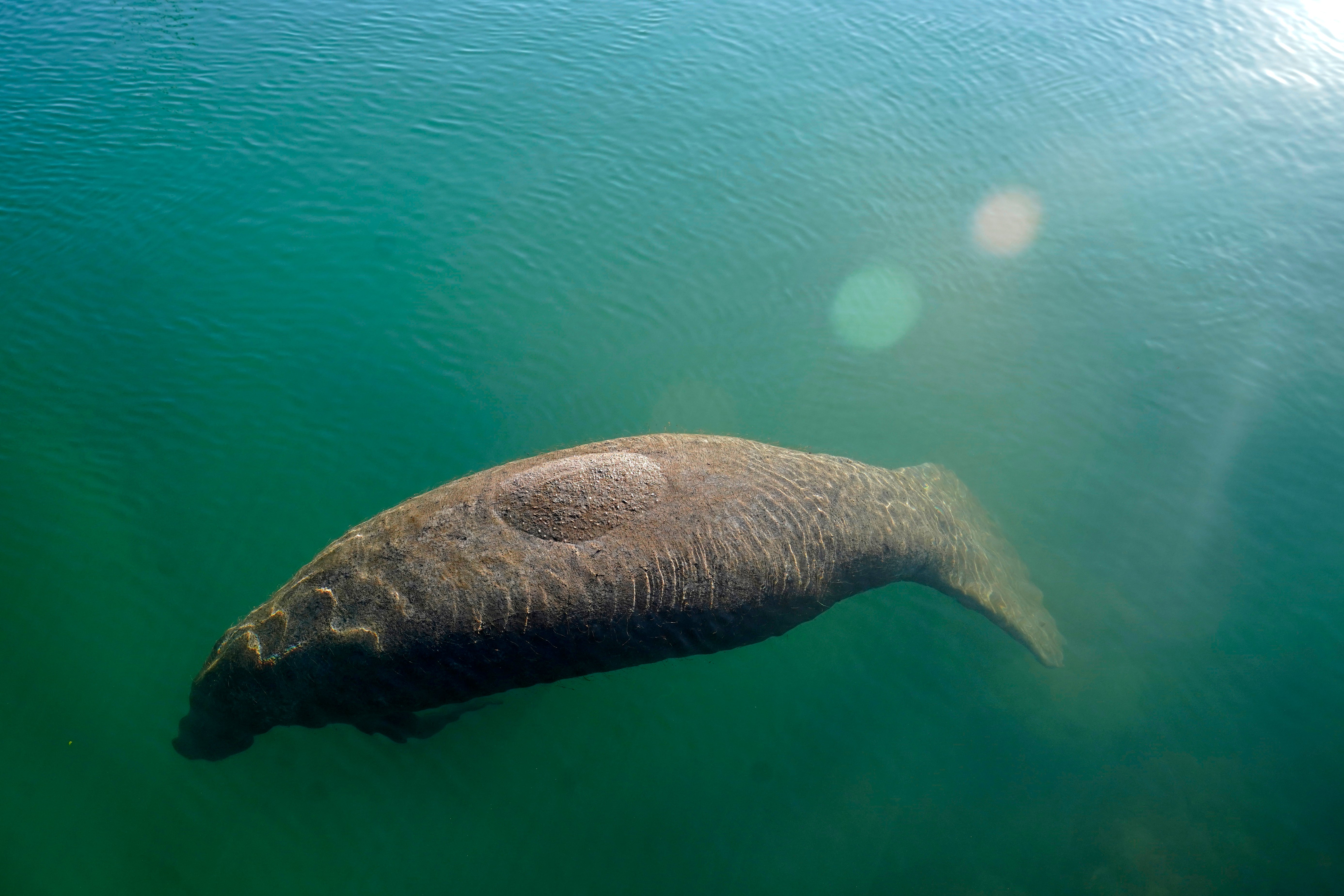Florida wildlife officials say some manatee food growing
Wildlife officials working to prevent Florida manatees from starving to death say they’re encouraged that some of the marine mammals’ favorite food is growing naturally in a key area

Your support helps us to tell the story
From reproductive rights to climate change to Big Tech, The Independent is on the ground when the story is developing. Whether it's investigating the financials of Elon Musk's pro-Trump PAC or producing our latest documentary, 'The A Word', which shines a light on the American women fighting for reproductive rights, we know how important it is to parse out the facts from the messaging.
At such a critical moment in US history, we need reporters on the ground. Your donation allows us to keep sending journalists to speak to both sides of the story.
The Independent is trusted by Americans across the entire political spectrum. And unlike many other quality news outlets, we choose not to lock Americans out of our reporting and analysis with paywalls. We believe quality journalism should be available to everyone, paid for by those who can afford it.
Your support makes all the difference.Wildlife officials working to prevent threatened Florida manatees from starving to death say they're encouraged that some of the marine mammals' favorite food is growing naturally in a key area.
Seagrasses have been found growing recently in small areas of the Indian River Lagoon along Florida's east coast where chronic pollution has wiped out much of it, officials said on a Wednesday conference call.
“We take it as a positive there is seagrass growing, ”said Ron Mezich of the Florida Fish and Wildlife Conservation Commission. “What that means long-term, we have no idea.”
The lack of seagrass forage during winter months has triggered an unprecedented die-off of manatees, including a record of more than 1,100 last year. The deaths recorded so far in 2022 are at 551, according to commission statistics.
The FWC and U.S. Fish and Wildlife Service in March completed an experimental program that fed manatees more than 202,000 pounds (91,600 kilograms) of donated lettuce near a power plant where the animals gather during colder months. Officials say a similar program is in the works for the coming winter.
“We aren't ruling out other locations,” Mezich said.
As of Wednesday, FWC officials said there were 92 rescued manatees being treated at rehabilitation centers around the country — most of them in Florida including critical care facilities at SeaWorld in Orlando and the Jacksonville Zoo and Gardens.
Jon Wallace of the U.S. Fish and Wildlife Service said the new seagrass growth is positive but the plants could easily be wiped out by a sunlight-choking summer algae bloom. Fully restoring seagrass and improving water quality will take years, he added.
“It is just going to be a long process,” Wallace said.
People interested in assisting the manatee program can donate to a FWC-affiliated organization. Distressed manatees can be reported by calling a hotline at 888-404-FWCC (888-404-3922).
There are only an estimated 7,520 of the animals in the wild today, according to the state wildlife commission.
Manatees are gentle round-tailed giants, sometimes known as sea cows, and weigh as much as 1,200 pounds (550 kilograms) and live as long as 65 years or so. Manatees are also Florida’s official state marine mammal.